Pistol Bergmann No.5 Model 1897 of the Year (Bergmann M1897 No.5)
After it became clear that the 1896 pistols of the year were not recognized by the military, Theodor Bergmann and Louis Schmeiser began designing a new pistol model. They set themselves two main goals: the use of a more powerful cartridge and the use of a new mechanism for locking the bolt. The free gate simply could not provide reliable locking of the barrel when using powerful ammunition. The pistol had to compete successfully with the famous K-96 Mauser that appeared on the market. New weapon Bergmann pistol No.5 model 1897 of the year (Bergmann M1897 No.5) was named.
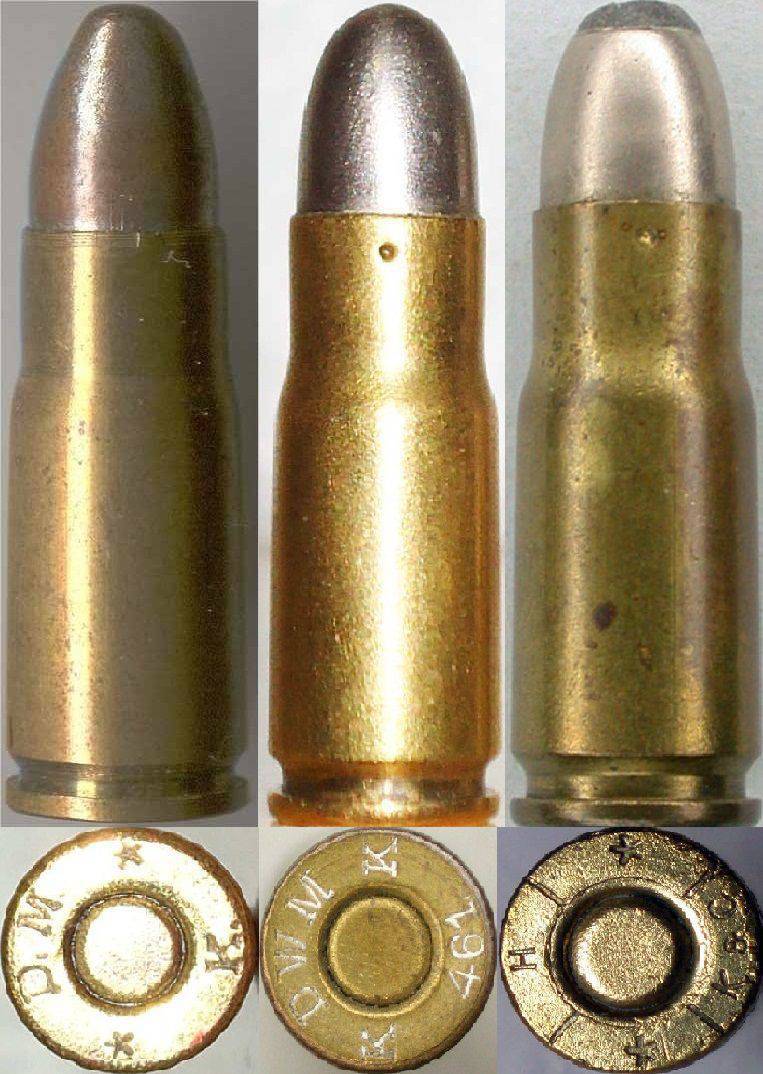
Probably due to the desire not to yield to Mauser, a cartridge was developed that almost completely copied the 7,63 × 25 mm Mauser cartridge. Bergmann's patron differed only slightly longer than the neck length of the sleeve and was called 7,8 × 25 mm Bergmann. The initial flight speed of the bullet cartridge 7,8 × 25 mm pistol Bergmann №5 - 400 m / s.
Comparing the 7,8 mm cartridge Bergmann with its predecessors, we can note not only a larger caliber, but also a larger amount of gunpowder, which significantly increases the power of the ammunition and makes it quite acceptable for military use. The photo from left to right shows: 5 mm cartridge Bergmann with a groove of a sleeve and without it, 6,5 mm cartridge Bergmann with a groove in the bottom of the sleeve under the ejector and without it, 7,8 mm Bergmann cartridge and Bergmann 8 mm cartridge number Bergmann №4.
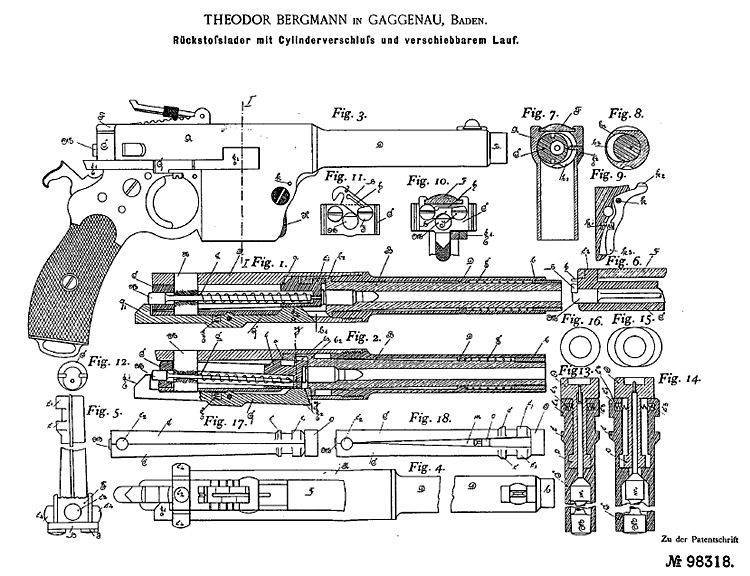
The design of the gun Bergmann №5 is protected by German patent number98318, from 10 March 1897 year. A little later, Bergmann received a patent # 17251 from 9 October 1897 of the year for his new gun in the UK. Automatic pistol uses recoil energy in the short course of the barrel. One of the main design features of the Bergmann M1897 pistol No.5 is the locking mechanism. The shutter when unlocked, moves in the lateral plane, which is very atypical for a short-barreled weapon.
The lugs are located on the left side of the bolt and enter into the corresponding grooves on the inner surface of the protrusion of the barrel. A flat spring on the right side of the receiver holds the bolt protrusions in the grooves of the barrel protrusion. After the shot, the bolt and barrel remain locked and together under the effect of recoil they move in the opposite direction approximately 6 mm. Further, the inclined surface of the rear part of the locking protrusions of the bolt rests on the inclined part of the receiver and the bolt begins to shift to the right, coming out of the coupling with the barrel. After uncoupling, the barrel stops, and the bolt continues to retreat to the extreme rear position, removing the cartridge case from the chamber and cocking the trigger. Reaching the rearmost position, the bolt under the action of the return spring begins to move forward, sending another cartridge into the chamber from the store.
It was possible to find a photo of one of the first prototypes of the Bergmann pistols No.5. Outwardly, he is very reminiscent of a pistol, a graphic image of which is shown on the German patent number XXUMX. A characteristic feature that distinguishes it from the later releases of the 98318 model pistols of the year is the presence of a sector-like sight of a different design. The sight is located at the top of the receiver and resembles a Mauzer sight. A different shape and location has a spring bolt locking mechanism on the right side of the receiver.
At one of the gun auction for 14 000 dollars, a prototype or transition model of a Bergmann M1897 pistol # XXUMX was sold. On the right side of the frame there is a bracket for attaching a removable butt, similar to the Bergmann No. XXUMX pistols. Holes to control the amount of spent cartridges made only on the right side of the frame. Unusual and button design to extract the store.
The barrel of the weapon has a round cross-section. The single-row magazine of increased length has side stoppers for fixing in the weapon. The cheeks of the handle are simple wooden without a notch and marking.
There are no serial numbers on the details of the pistol and from the marking there is only a logo in the form of a miner with a pickaxe without additional inscriptions. All this testifies that this is the prototype of the Bergmann pistol No.5, made directly at the Bergmann factory.
The top of the gun looks just a bit unusual. In the back of the recess, made on top of the shutter, a simple slotted rear sight is visible.
The Bergmann Pistol No.5 of mass production has a slightly conical round-shaped barrel. The barrel is screwed into the threaded part of the receiver, which has a rectangular cross-section.
The length of the barrel of a pistol varies and is usually in the range of 89-133 mm. On the left side of the frame in the area of the chamber there is a hole, as in previous models of the gun. Pistol Bergmann №5 equipped with a horizontally adjustable front sight of a triangular shape.
Many of the structural elements remain the same and resemble the earlier 1896 and 1894 models of the year. The trigger mechanism as in previous models of weapons of simple single action. At the same place in the back of the frame to the right is the safety lever. Almost the same was the process of disassembling weapons. Especially for a military pistol was developed sector-sight "P" -shaped shape, placed in the side grooves of the receiver.
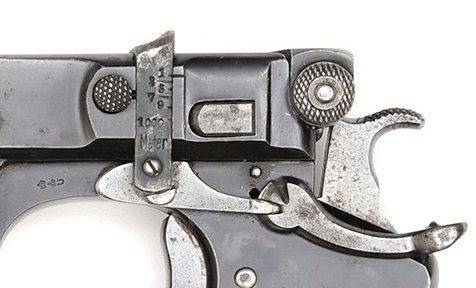
Graduation is applied on the left side of the sight. The sight allowed to adjust the weapon for firing at a distance: 100, 300, 500, 700, 900 and 1000 meters. The distance of 1000 meters was rather an attempt not to yield to Mauser, since it is unlikely that a weapon is capable of conducting effective aimed shooting at such a distance. On the left side of the frame there is a lock button for the sight, allowing you to move the sight vertically and fix its position at the selected shooting distance.
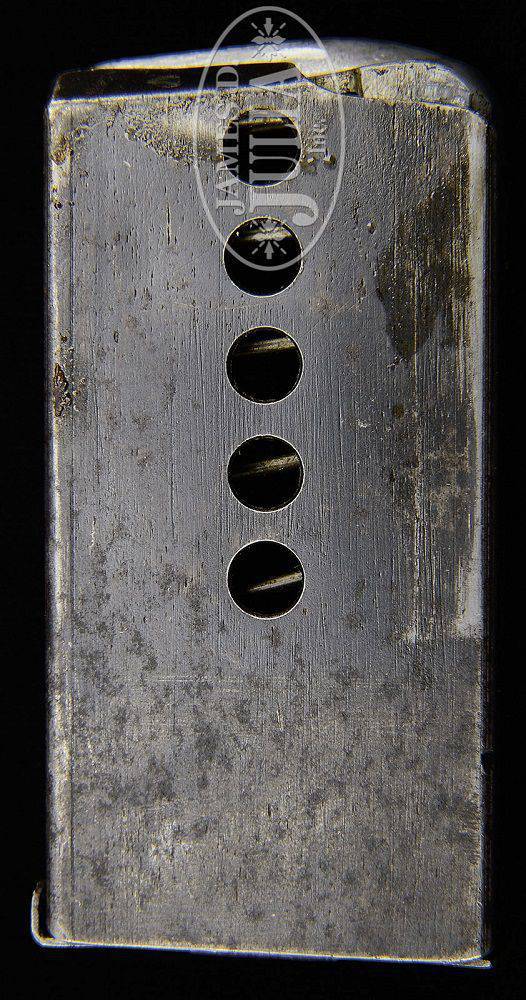
In the gun Bergmann M1897 №5 was used removable box-shaped magazine, which is located in the frame in front of the trigger guard. Shop two-row, with a capacity of 10 cartridges. On the sides of the magazine, 5 holes are made to control the presence of cartridges. The store has the ability to load batch directly on the weapon through the window at the top of the receiver or manually when it is removed from the pistol.
The usual marking at the top of the receiver of a pistol is a text in two lines: "PISTOLE BERGMANN / PATENT BREVETE SGDG".
Sometimes on the weapon there is another mark “DEM ERKENNER DER BERGMANN-PISTOLE / DR. REINH. GUNTHER VON THEOD. BERGMANN.
Military Bergmann M1897 №5 is equipped with an attached holster butt. The clamp for fixing the butt was located at the bottom of the handle. We already saw a similar design of a clamp in pistols of Bergmann No. XXUMX.
Bergmann's leather holster-butt #5 in the lower part has a metal protrusion for fixing on the arms of the weapon. The holster is equipped with a pocket for a removable magazine.
Removable holsters-butts at the end of the 19 century were a fairly frequent attribute of army pistols. In the same Mauser K-96 wooden holster served as a removable butt, turning the gun into a small carbine.
In my opinion, again influenced by the work of a competitor and looking at his pistol-carbine Mauser K-96 Theodor Bergmann launches his pistol-carbine.
Carabiner Bergmann has a wooden attached butt. In the lower part of the butt and in the lower part of the trunk there are antabas for fastening the belt.
The weapon is equipped with a barrel length 343 mm. For such a long barrel, it was necessary to increase the length of the front, threaded part of the frame. The rest of the design of the gun Bergmann №5 remained almost unchanged. The handle has the usual shape, the cheeks of the handle are made of hard rubber with the letter “B” in the upper part.
On the upper part of the receiver there is a marking, indicating that the weapon was actually made as a carbine "KARABINER BERGMANN, PATENT BREVETE SGDG".
Pistol Bergmann #5 was on several trials and tested for use as an army pistol. The Swiss did their testing in the 1897 year and the 1898 year, and most likely found the gun too fragile or unreliable. The British military, who tested the gun in the 1902 year, considered the weapon potentially acceptable, but did not put it into service, because, according to their understanding, the caliber and weight of the bullet was insufficient for an army pistol, especially in comparison with its .455 Webley cartridge. There is information that the US Army Department tested the gun in 1901, but did not purchase it for further testing.
In an effort to diversify their products, Bergmann is trying to provide the fifth model of his pistol with additional options. Here is an example of a Bergman pistol No.5 with a serial number 96, the handle of which is equipped with improved pads intended for target shooting. Special nut handles with a small notch, mounted on the base of black hard rubber, the most ergonomic for the hands of the shooter. At the bottom of the handle there is still a lock for a removable holster-butt.
According to rough estimates, around 800 pistols No. 5 Bergmann were released. The weapon failed to attract potential buyers and Bergmann did not receive a single military order. Almost all pistols were mostly sold in the commercial market.
Currently Bergmann No.5 model 1897, like other Bergmann pistols are in high demand among collectors. Rarely when the price of a gun at auctions is less than 10 000 dollars. Individual pistols or carbines are sometimes 20 000 - 30 000 dollars.

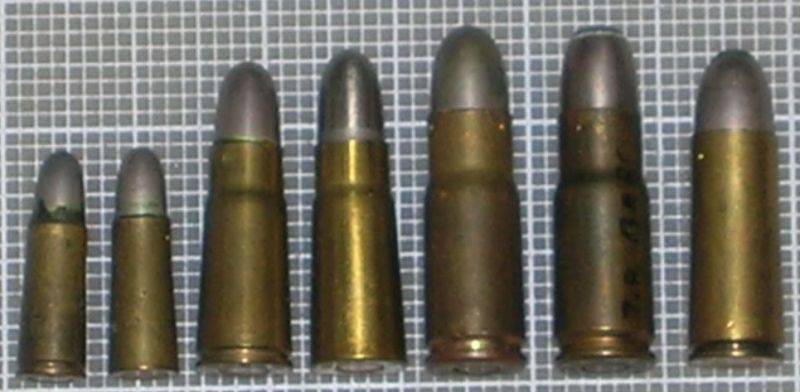
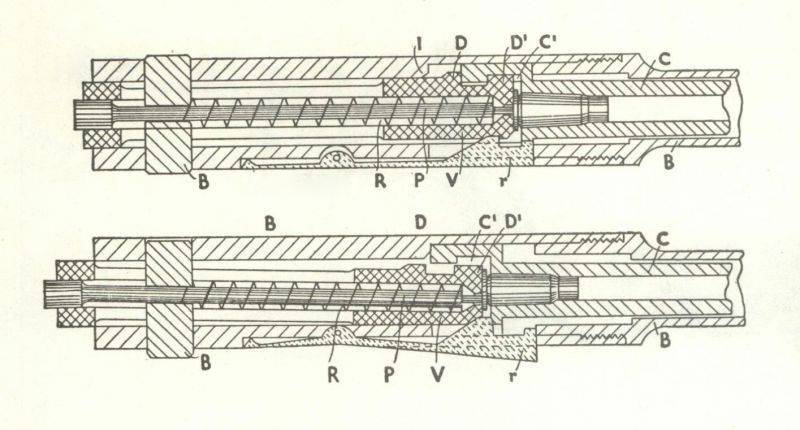
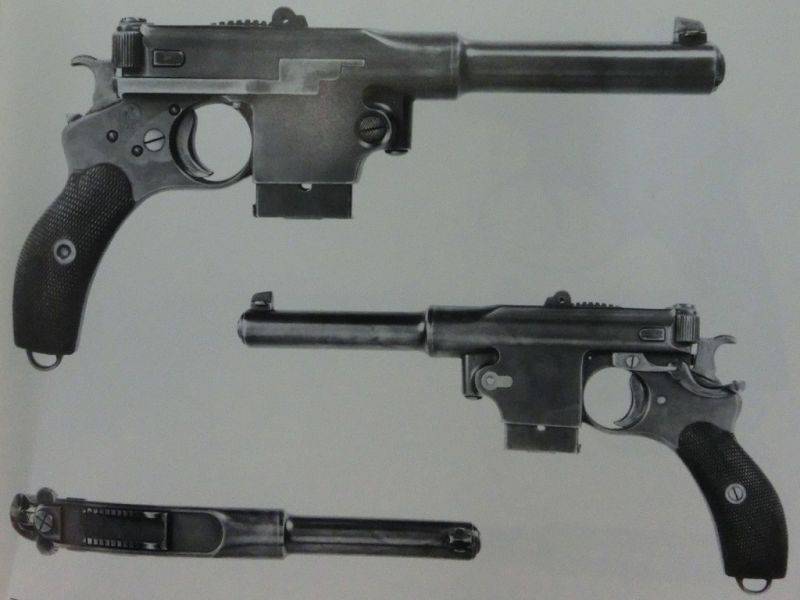
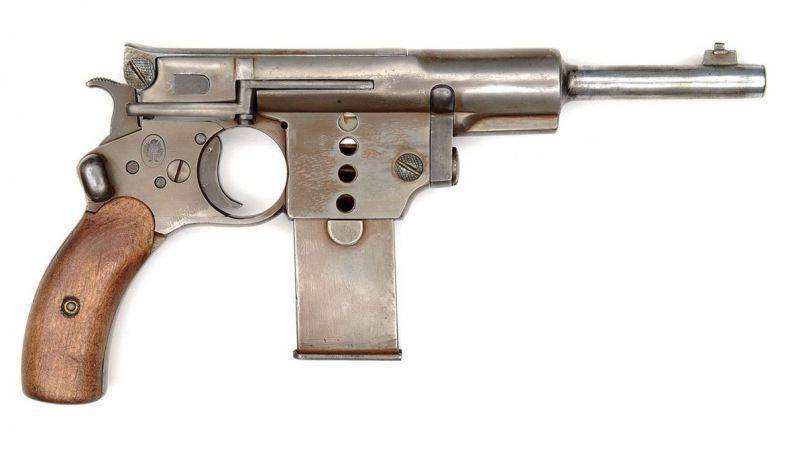
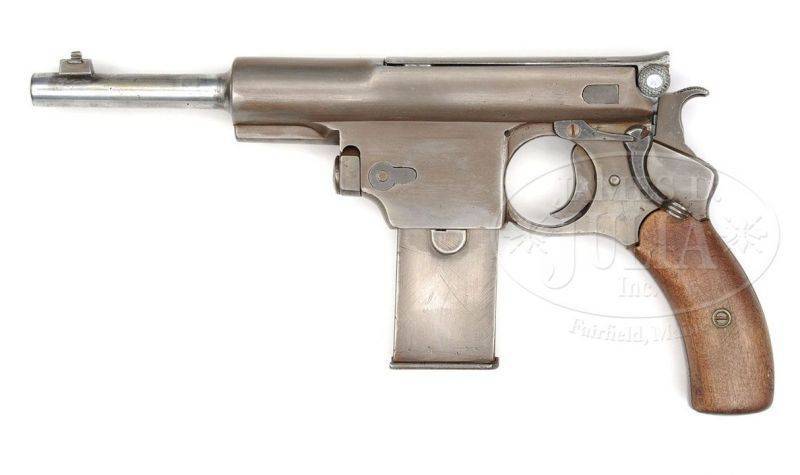
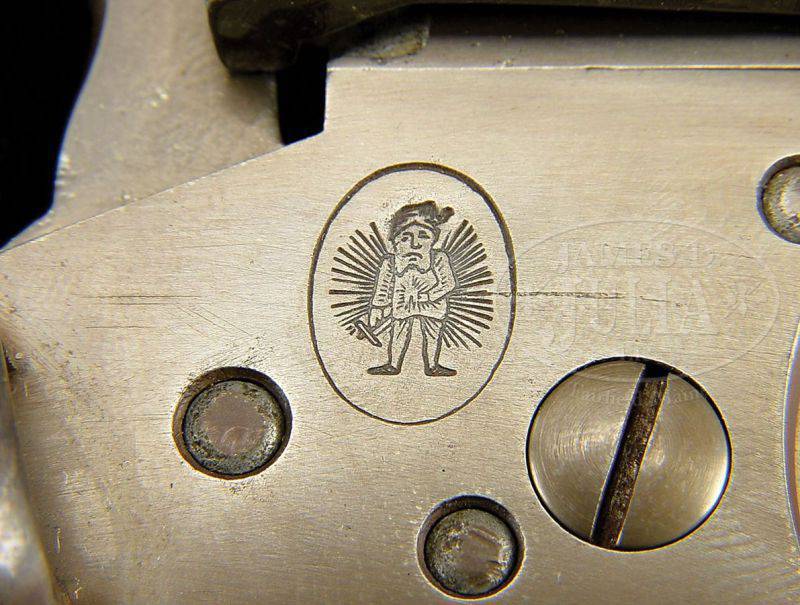

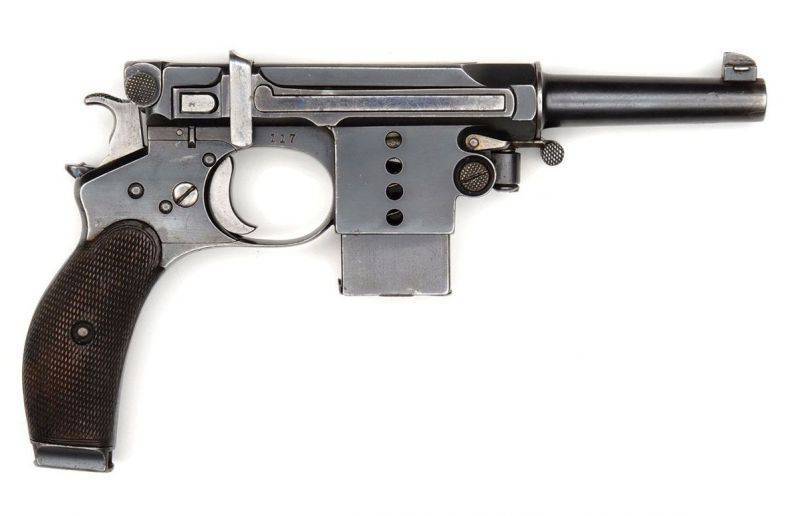
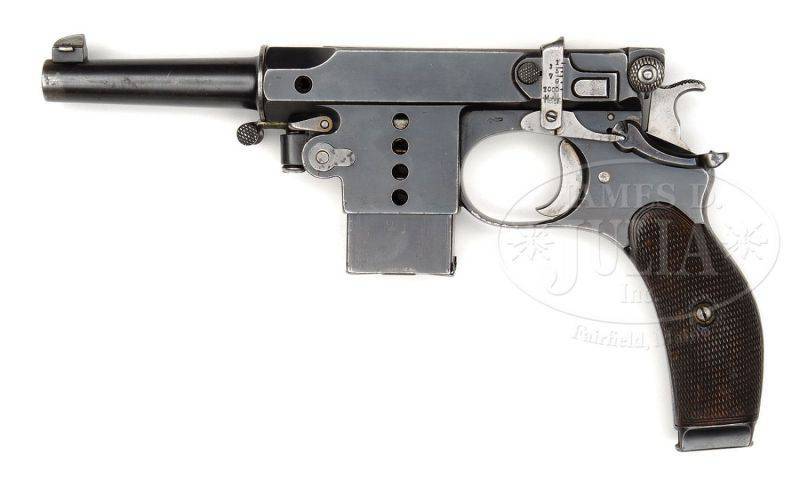
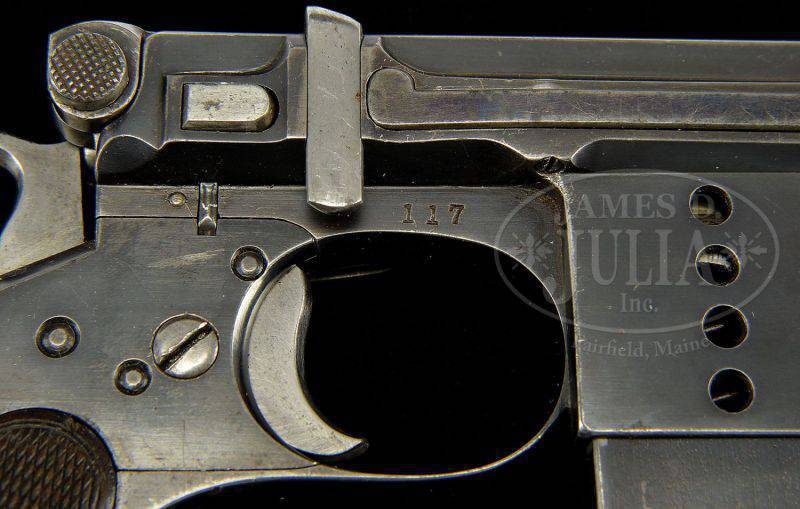


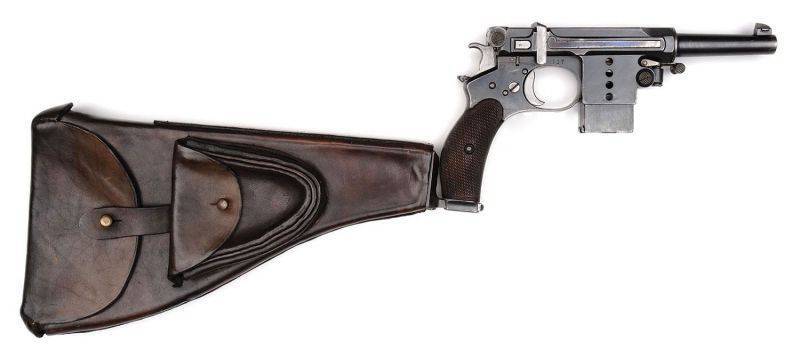
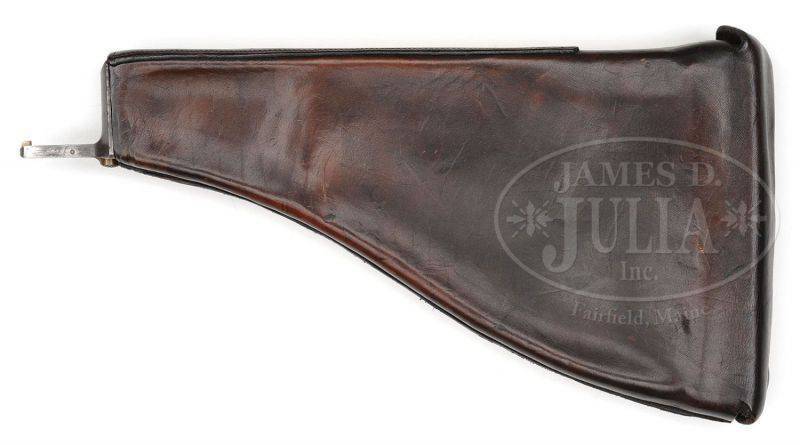
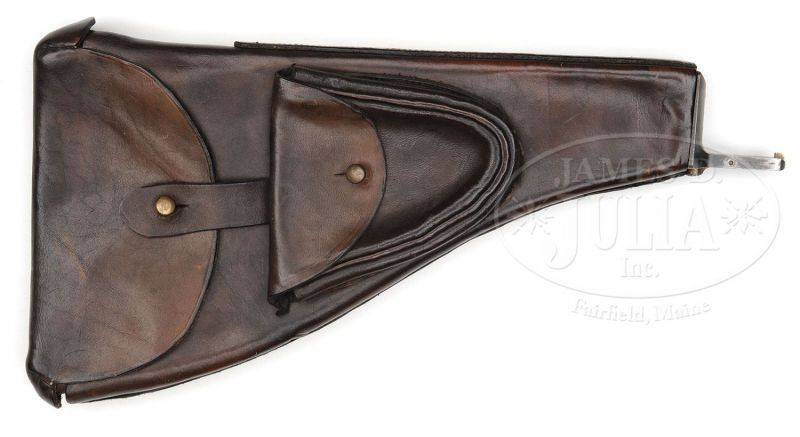




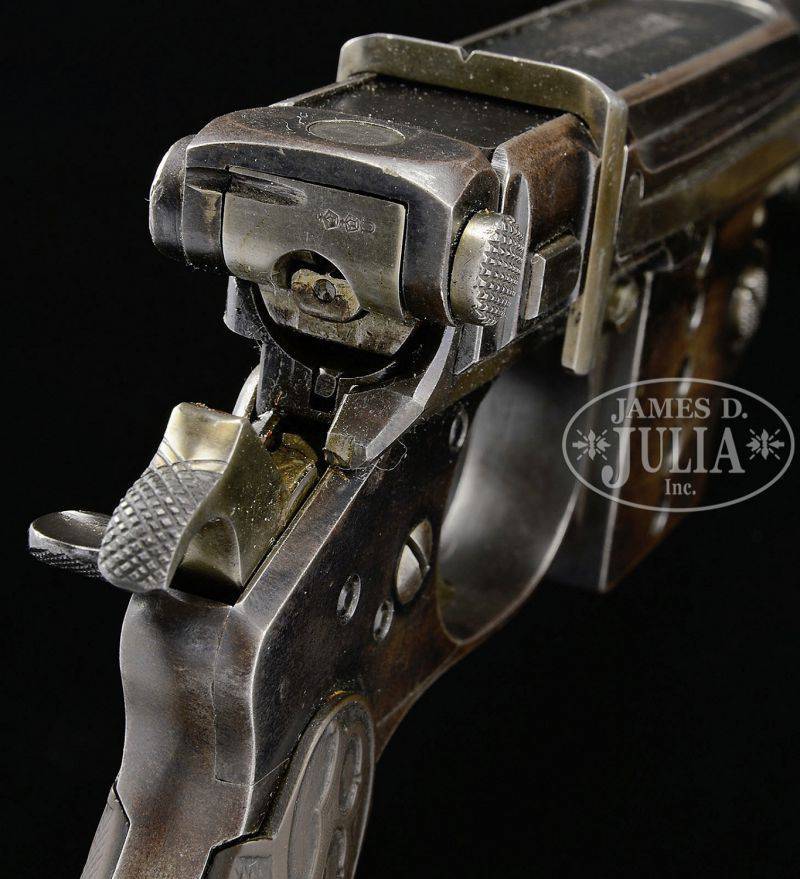
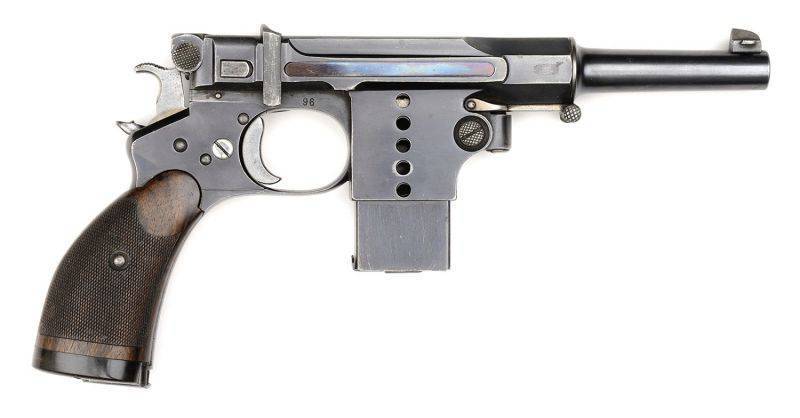
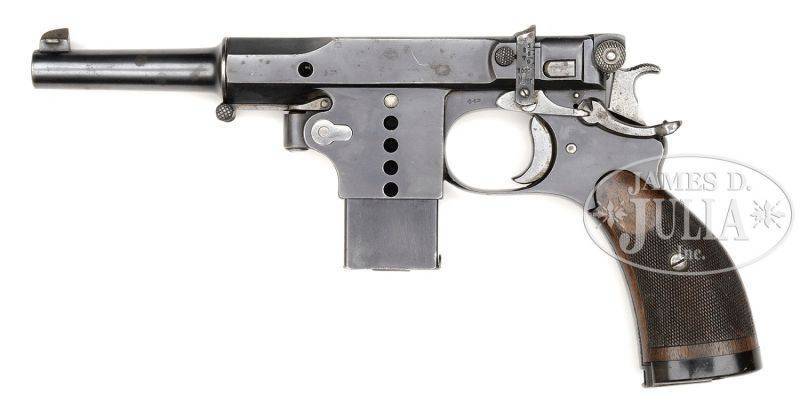
Information